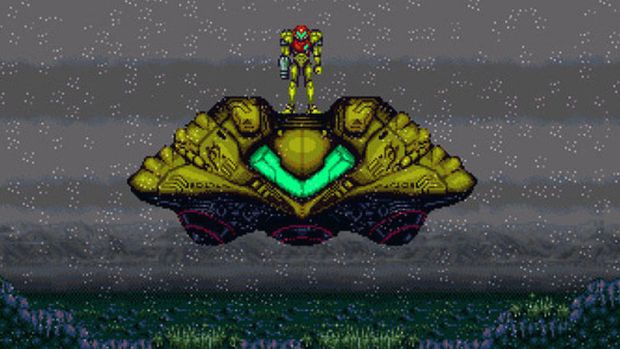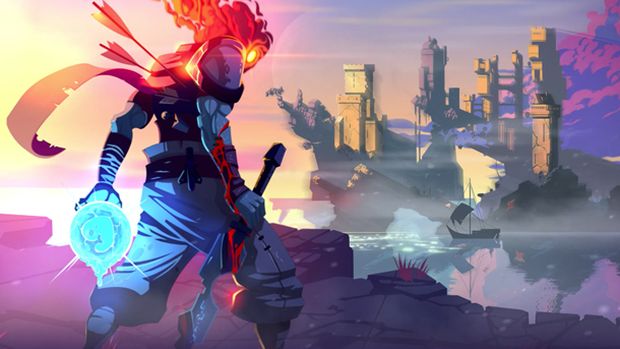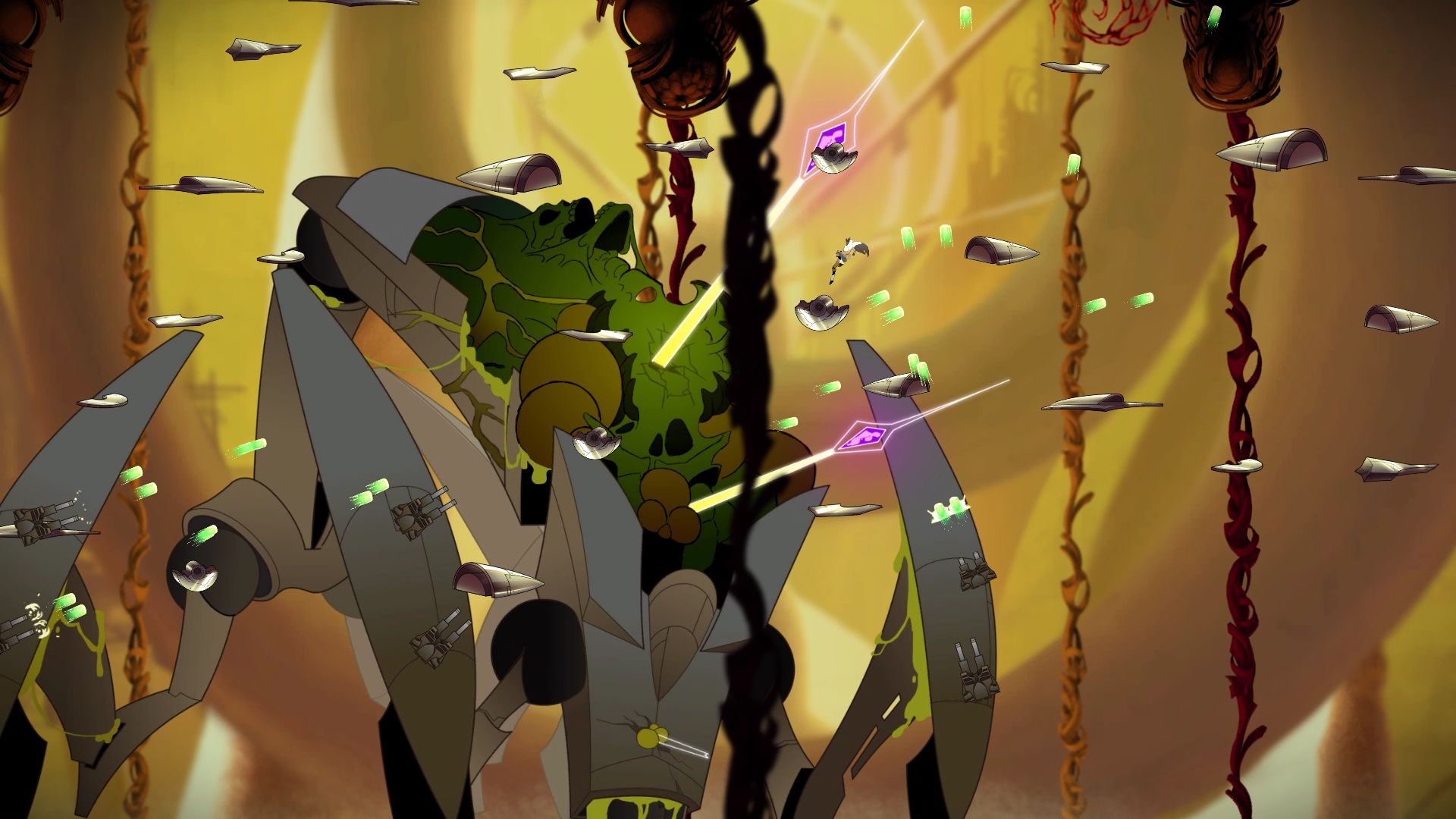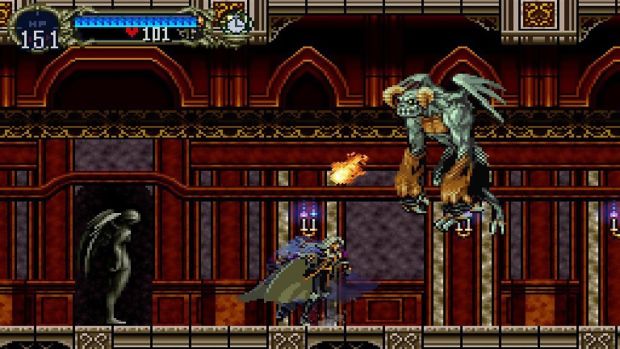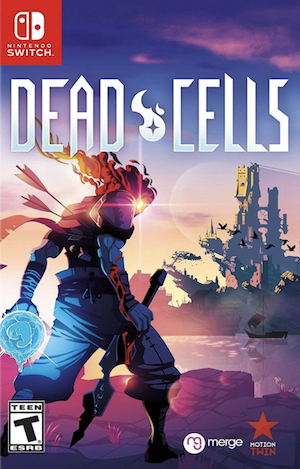
Metroidvania titles have been a fascinating genre. From the years of playing various Castlevania titles on the Game Boy Advance and Nintendo DS to messing around with Metroid on the SNES and GameCube, the overall experience is cathartic in a way that’s hard to describe. Sometimes I feel like the hack and slash gameplay coincided with RPG-like progression is the main source of entertainment, as seen in Castlevania. Other times, it’s the puzzle solving and clever application of discovered powers in previously unexplorable areas. The visual style and intricate detail in each area and boss provides a motivation to keep exploring. What could be around that next corner and how do you tackle it? Will you be able to progress forward? And regardless of what’s gained, how can you use it to exploit previously seen areas?
Since the days of Castlevania and Metroid (the latter which is making a comeback with Metroid: Samus Returns, a remake of the second game, and Metroid Prime 4), the Metroidvania genre has seen its share of interesting takes. Dust: An Elysian Tail had a compelling, almost Devil May Cry-like combat system along with a stunning art style and narrative to push players forward. Axiom Verge took a more retro approach with its graphics but was incredibly contemporary in how it pushed exploration, guiding the player along while still making each new discovery feel spontaneous.
Similarly, there are games like Ori and The Blind Forest, Hollow Knight, Guacamelee, Strider, Valdis Story: Abyssal City, Salt and Sanctuary and so on that have provided the well-crafted, expertly honed gameplay that’s to be expected. Whether it’s amazing combat or hand-crafted gameplay loops set to beautiful pre-defined stages, each game offers an excellent experience.
However, a new type of Metroidvania title has been gaining traction for some time. In a way, it’s completely changing what we think of the genre. What if – and this is a bit crazy but – what if a large portion of the stages were randomly generated as well as hand-crafted? What if the RPG-like progression was more rogue-like, focusing on more long-term upgrades but effectively starting you at the beginning with each run? What if such a Metroidvania title tried to balance between rewarding you for discovery while attempting to kill you and send you back to the beginning?
Rogue Legacy was the first Metroidvania title to experiment with this, featuring a large castle with randomly generated areas but four key “zones” with the same four bosses. Each time the player would die, control would be passed on to his heirs who would have unique traits and abilities. Some were positive, like being small and able to fit through tiny gaps, while others – like colour blindness – could trip you up if you weren’t careful. Gold gained through a single run could be used to upgrade your heirs, thus providing potency down the line. However, the thrill of trying to complete the entire castle with one single heir was addictive, to say the least.
"There’s no back-tracking to previous stages and whatever permanent abilities are gained simply serve to diversify the beaten paths you can travel down."
Nowadays, games like Dead Cells and Sundered provide a different motivation. Dead Cells is perhaps one of the more popular new titles in this rogue-like sub-genre (it’s currently in Steam Early). Its long-term progression can be fairly slow however. In Dead Cells, you gain random weapons/equipment and stat buffs and battle enemies to progress. Sounds simple enough but each enemy can dole out some pretty lethal damage if you’re not careful. The game starts scaling damage very quickly to the point that a single hit from a particular enemy can kill you.
However, it also has the Bloodborne mechanic of being able to regain lost health by attacking an enemy. Dead Cells’ player damage also isn’t entirely reliant on buffing weapon stats. You could invest in your Balanced Blade or Dual Daggers doing more damage with Cells or you could discover random weapons with status effects that inter-play with each other. For instance, pick up an Assassin’s Dagger which crits enemies from behind and deals 100 percent extra damage to burning enemies, pair it with a Teleport ability for dealing extra damage from behind (while also dropping oil and igniting the floor) and throw in a Freeze grenade for good measure.
The satisfying and responsive nature of Dead Cells’ combat combined with the utter diversity of item builds and constant worry of taking even a shred of damage in certain situations makes the game highly replayable. This is despite the fact that even if you’re vigilant, you can die incredibly quick. Furthermore, exploration often involves traveling off the beaten path to potentially discover Elite enemies, Cursed Treasure chests, stat boosts, items, merchants and so on.
It’s risk vs. reward at times as you neither know what enemies will try to kill or what kind of boons can be expected (random generation of these beaten paths helps keep them fresh each time). Still, there’s no back-tracking to previous stages and whatever permanent abilities are gained simply serve to diversify the beaten paths you can travel down. You’re not going to find a brand new area or story progression by doing so. And in many ways, despite how powerful certain items and combinations may be, it comes down to your own skill when pulling them off.
"The Metroidvania crowd hasn’t been decrying Dead Cells as a twisted version of the genre that shouldn’t be."
Now I’m not going to tell you that everyone is in love with Dead Cells (though the praise for Rogue Legacy was very strong). I’ve read plenty of criticisms about its cheapness. Some believe that many of the combat mechanics and difficult mirror Dark Souls, thus attracting that more hardcore subset that also happens to like pixel art and platforming. However, the Metroidvania crowd hasn’t been decrying Dead Cells as a twisted version of the genre that shouldn’t be. In fact, it’s received praise for doing something different. In a way, many of the core aspects of the genre emerge in unorthodox ways throughout Dead Cells like the aforementioned exploration, using certain abilities to unlock previously inaccessible areas, unlocking more weapons and powering up players enough to explore further and so on.
Then there’s a game like Sundered from Thunder Lotus Games, the developer of Jotun. Sundered is arguably more Metroidvania then Dead Cells. There is a central hub but it mixes a heavy degree of crafted areas with random generation. The kicker is that the randomly generated areas can be fairly repetitive with each success run through them. Though Dead Cells does the same thing, it’s core repeating area is pretty straightforward – the randomly generated branching paths are fairly unique each time but in smaller ways (that become more obvious as time goes by).
Sundered has plenty of back-tracking with its unique abilities, allowing you to access previously unreachable areas and bosses. There’s also a lot more lore inherent as you learn about the Valkyries, this strange Eldritch being that’s helping you and how certain icons were seemingly driven mad. When you die, you don’t lose all of your collected currency (referred to as Shards) and they’re pretty valuable.
These provide your permanent upgrades and are pretty much what will get you through latter game portions unlock with the perks you equip. Sundered does have a way of being decidedly rouge-like though. You may set a goal, say, traversing to a certain area that could potentially be open with your new ability. However, the longer you stay alive, the more hordes of enemies the game will throw at you. You might be strong enough to resist them, maybe even dominate them.
"It’s like withe every death, the game is testing you and telling you to go back with whatever Shards have been earned to become stronger."
Battles can move from skill-based running, jumping and attacking to simply standing around and whacking enemies, regenerating health and shields accordingly while avoiding environmental traps. If you die, then maybe you gathered enough Shards for more upgrades to make you sturdier. Wash, rinse and repeat. The process of progressing through Sundered feels a bit like survival initially – the stronger you get, the more comfortable you feel exploring and back-tracking through the world. You can still die if you let your guard down though.
This approach has been met with somewhat of a mixed response despite how gorgeous Sundered looks. The enemies can spawn in droves and cutting down your HP bit by bit until you’re dead – and at times, that can irrespective of trying to escape or standing your ground. The game’s appeal of “changing” areas doesn’t really offer much that’s different from what you traversed before. This in itself is interesting because it brings to mind the back-tracking that occurs in a normal Metroidvania title.
It’s not like Sundered is creating impossible environmental situations for you to cross – those lazer trip-wires and escape through poisoned clouds can be traversed with enough practice. It’s the hordes that can strike at almost any time, even when you’re upgrading skills, that can wear on the player. The longer you stay alive, the more difficult enemies you’ll face until even the Elites join the party. It’s like with every death, the game is testing you and telling you to go back with whatever Shards have been earned to become stronger. Of course, there’s no enemy level scaling so it’s more like the game’s way to telling you to make the same run again, probably not die because now you’re strong enough, and thus progress.
Make no mistake though. This is a Metroidvania title. Seeing the response to it is interesting. Remember – even Jotun was fairly divisive among people. Sundered will either make you obsess over its world and grinding to become stronger and pushing forward. The hordes may be a nuisance but overtime, they can either be destroyed very easily or avoided because of your tankiness. Perhaps the biggest oversight to me is the real lack of randomly generated sub-paths or unique discoveries like Dead Cells. Randomly generated areas will become repetitive eventually and really, to offer the player some semblance of assistance, it’s a good idea to not come up with some truly bizarre combination of areas. But that’s another matter entirely.
"I do wonder at times if these games can capture the same sense of wonder we had when fighting Mother Brain for the first time."
When I look at the history of Metroidvania games, it’s easy to see what made them click. Games like Sundered and Dead Cells take many of the same tropes but are seemingly more “run” driven, benefiting those who don’t want to spend hours figuring out where to go next or testing certain items for certain puzzles. They’re seemingly meant for those who want to beat things up with powerful attacks and if they die, become potentially more powerful in the next run and thus, the feedback loop continues.
However, there’s a certain charm to this mix of rogue-like, hand-crafted and random generation, as they prompt exploration and that urge of what lays around the next corner. And really, when you consider how many Metroidvania games were completed and moved on from, a game like Dead Cells can prompt the player to come back and test their mettle. Because who knows what weapons, statuses and overpowered builds they’ll have this time? Of course, this doesn’t quite apply to Sundered which doesn’t dole out weapons and stat buffs on an RNG basis.
I do wonder at times if these games can capture the same sense of wonder we had when fighting Mother Brain for the first time. That same charm of playing as Alucard in Symphony of the Night or the revelations behind Soma Cruz in Aria of Sorrow, not to mention the intricately mapped areas of Metroid Prime series with some of its frustrating but creative bosses. Granted, these games do have their own bosses but they seem to emphasize moment-to-moment gameplay more heavily, with Sundered doing a somewhat better job of building to a boss fight.
Those games will still continue to be made, which is great, and developers will branch of into newer things which is also great. Regardless and despite the criticism that games like Sundered are currently facing, the Metroidvania is alive and well. Even better, it’s a genre that’s grown into its own without having to rely on solely Metroid and Castlevania to exist.
Note: The views expressed in this article are those of the author and do not necessarily represent the views of, and should not be attributed to GamingBolt as an organization.








